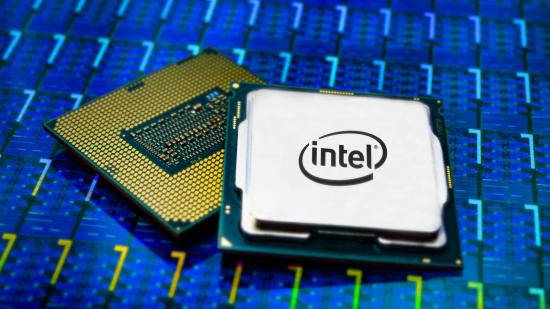Surpassing the clock speeds of even the special edition Intel Core i9 9900KS, the 5.3GHz “Thermal Velocity Boost” on the i9 10900K will usher in the next-generation of processors out of Intel’s fabs, Intel Comet Lake, ready to reach new heights on the company’s long-toothed 14nm process.
All signs point towards Intel loosening the power restrictions with its next-gen Comet Lake CPUs. A 30W TDP increase will see the i9 10900K Comet Lake CPU up to 125W, likely necessitated by the appetite of two extra two-cores, for a grand total of 10 at two threads a piece, and a clock speed bump up to a maximum of 5.3GHz, slides published by Informatica Cero suggest.
That single-core clock speed is courtesy of a new technology touted for the Comet Lake lineup: Intel Thermal Velocity Boost. According to the leaked slides, which are still unconfirmed at this time, this is a bonus boost technology working in tandem with the usual Intel Max Turbo tech, and appears to only be available on the top chips: the Intel Core i9 10900K and i9 10900.
A slide uncovered on a Chinese blog (via HardwareLuxx) suggests Intel’s expecting a sizeable multi-thread performance boost in line with the two core increase, and a slight improvement to single-core performance matching the light clock speed increase.
Built upon another enhancement of the original 14nm Skylake architecture, the i9 10900K will see a linear increase in total cache to 20MB, continuing the 2MB per core loadout.
The remaining chips in the stack, and those with a chance of ranking among the best CPUs for gaming, will settle for slightly pared back clock speeds. Nevertheless, the 8-core/16-thread i7 10700K at up to 5.0GHz single-core boost could make for mighty single-threaded performance valued by most videogames.
Similarly, the i5 10600K could be a solid buy for custom gaming PC builds. This chip will feature Hyperthreading for a grand total of 6 cores and 12 threads, and will be capable of up to 4.8GHz single-core boost.
The entire stack, from i9 to i3, will feature Hyperthreading. This thread-doubling feature was previously only enabled on Intel’s i7 chips.
All new chips are touted on a new, non-backwards compatible platform, the 400-series.
| CPU | Cores/Threads | Base/Single-core turbo (GHz) | Max Turbo 3.0 (GHz) | Intel Thermal Velocity (GHz) | TDP (W) | Price |
| Core i9 10900K | 10/20 | 3.7/5.1 | 5.2 | 5.3 | 125 | TBD |
| Core i9 10900 | 10/20 | 2.8/5.0 | 5.1 | 5.1 | 65 | TBD |
| Core i7 10700K | 8/16 | 3.8/5.0 | 5.1 | N/A | 125 | TBD |
| Core i7 10700 | 8/16 | 2.9/4.7 | 4.8 | N/A | 65 | TBD |
| Core i5 10600K | 6/12 | 4.1/4.8 | N/A | N/A | 125 | TBD |
| Core i5 10600 | 6/12 | 3.3/4.8 | N/A | N/A | 65 | TBD |
| Core i5 10500 | 6/12 | 3.1/4.5 | N/A | N/A | 65 | TBD |
| Core i5 10400 | 6/12 | 2.9/4.3 | N/A | N/A | 65 | TBD |
| Core i3 10320 | 4/8 | 3.8/4.6 | N/A | N/A | 65 | TBD |
| Core i3 10300 | 4/8 | 3.7/4.4 | N/A | N/A | 65 | TBD |
| Core i3 10100 | 4/8 | 3.6/4.3 | N/A | N/A | 65 | TBD |
But while the specs are looking sharp on paper, the real danger for Intel’s chips is in pricing, specifically in reference to AMD’s Ryzen 3000 processors. Weighing in with up to 16 cores in the mainstream CPU market, and with only a light clock speed deficit on Intel’s comparative chips, AMD’s latest 7nm processors are attempting to price Intel out of the market.
Intel responded to the recent pricing pressure by nearly halving its prices across the HEDT product lineup, Cascade Lake X. However, whether any pricing restructuring will occur with the client-side chips remains to be seen.
We’re hoping to hear more regarding Intel’s Comet Lake CPUs, and perhaps even Intel Xe, over at CES 2020 next week.

